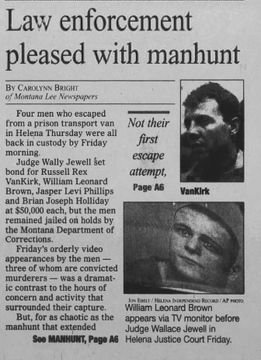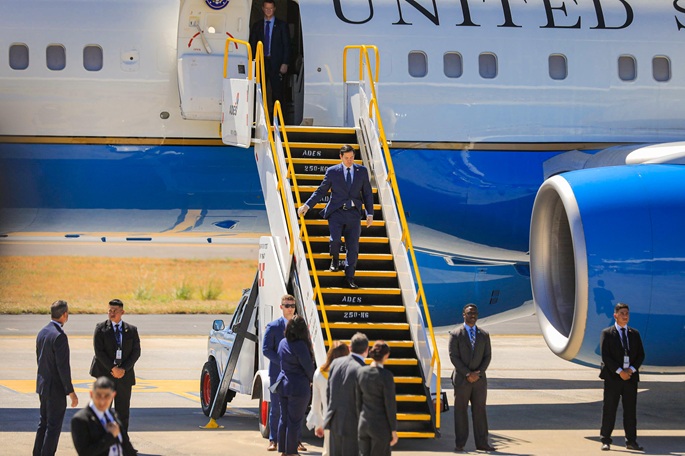Use Ethos, Pathos and logos to determine reliable narrator in following passage:
Clare Boyle the niece of the alleged mass shooter Michael Brown of Anaconda Montana has released the following statement on behalf of their family. The Boyle’s written statement can be read in full below.
“We don’t know much right now unfortunately apart from what the police know.. My uncle is a very mentally ill veteran. He served in the army and was sent home a sergeant. He had developed schizophrenia during his time in Iraq and Afghanistan.
Then he joined the National Guard where he was not allowed to be deployed again due to his mental illness.. Mikee hasn’t been the same since he came back.. It’s been progressively worse with the passing of both parents and exceedingly worse since the trauma of my grandmas passing (his mother)… The VA turned us away stating that they weren’t able to help. The Montana state Hospital turned us away because they only accept patients who are court ordered which could not happen unless “He becomes a harm to self or others”.
The system failed.. We as people failed.. Failed to report suspicious behavior because “that’s just Mikee” patrons of the bar urinating on his porch and mocking his delusions to get a rise out of him because they know it will… You deal with that long enough… With a mental illness? Horrible things are going to happen. We begged people to listen and open their eyes.. 99% of the time Mikee is harmless. You can ask almost anyone in town. If you’re not mocking his delusions or being awful towards him he is one of the best people… I don’t know what happened Thursday night to provoke this and I don’t know what happened Friday morning to push this… what I do know is no amount of words or apologies will ever be enough to express the remorse and heartbreak I personally feel for these families effected. 5 families were destroyed on Friday morning.
To determine whether the narrator (Clare Boyle, via her written statement) is reliable, we can assess her use of **ethos** (credibility), **pathos** (emotional appeal), and **logos** (logical reasoning).
## **1. Ethos (Credibility):**
– **Connection to Subject:** Clare identifies herself as Michael Brown’s niece, establishing a close relationship and presenting herself as a family spokesperson.
– **Insider Knowledge:** She references family history and personal experience with Michael’s mental illness and medical treatment attempts, suggesting direct experience.
– **Transparency:** She admits, “We don’t know much right now unfortunately apart from what the police know,” and, “I don’t know what happened Thursday night… or Friday morning,” which suggests honesty about the limits of her knowledge rather than portrayal of certainty.
**Assessment:**
Clare’s ethos partially supports her reliability; she’s up-front about what she does and does not know, speaks with empathy, and has direct involvement. However, as a family member, she may have unconscious bias in defense of her uncle.
## **2. Pathos (Emotional Appeal):**
– **Appeals to Sympathy:** The narrative emphasizes Michael’s mental illness and trauma: “mentally ill veteran,” “developed schizophrenia,” “wasn’t the same since he came back,” “trauma of my grandma’s passing,” “the system failed.”
– **Systemic Critique:** Expresses frustration at healthcare and systemic failures (“VA turned us away,” “Montana State Hospital turned us away”), and the community’s passivity or cruelty toward Michael.
– **Victim’s Remorse:** “No words or apologies will ever be enough to express remorse and heartbreak… 5 families were destroyed…”
**Assessment:**
Strong emotional language (“horrible things are going to happen”) is meant to evoke empathy and perhaps lessen judgment of Michael Brown. While this is authentic in grief, it may also serve to shift blame from the accused to societal failures, suggesting some emotional bias.
## **3. Logos (Logic):**
– **Factual Claims:** Provides a timeline—service in the army, development of illness, attempts to get help, rejection by institutions. Cites specific causes for the situation (mental health deterioration, failing support systems).
– **Acknowledgement of Uncertainty:** Clearly states what is unknown about the events in question (“I don’t know what happened…”).
– **Rational Explanation:** Argues that long-term mistreatment and untreated illness leads to tragedy.
**Assessment:**
The reasoning is logical within the framework of the story: trauma, untreated mental illness, and systemic neglect can contribute to tragedies. However, there is absence of direct evidence about the actual events (“I don’t know what happened Thursday night”), which underlines that her claim is interpretive, not eyewitness or fact-driven about the central incident.
## **Conclusion: Reliable Narrator?**
**Clare Boyle appears to be a **reliable** narrator regarding the family’s experiences, her uncle’s mental health, and efforts to get help.** Her transparency about gaps in her knowledge, firsthand experience, and emotional candor enhance her credibility about these aspects.
**However, she is not a reliable narrator for the details of the actual shooting incident,** as she explicitly admits her lack of knowledge (“I don’t know what happened…”). Her emotional closeness to Michael and the tragic situation could introduce some bias, mainly in her framing of events as systemic failures rather than addressing possible personal culpability.
**Summary Table:**
| Aspect | Reliable? | Reasoning |
|——————-|————-|————————————————–|
| Family history | Yes | Firsthand knowledge, direct experience |
| Michael’s illness | Yes | Observed over time, acknowledges uncertainty |
| Shootings details | No | Admits ignorance of facts |
| Motive/blame | Partially | Emotional, some bias towards systemic explanation |
**Overall:**
Clare is a reliable narrator for her direct experiences and observations, but her narrative of the shooting itself is limited to secondhand information and emotional context, not factual account of the events.
source. perplexity.ai
Social Media. https://x.com/jameslangelle
GROK.
- The post references a real-time investigation into a quadruple homicide at the Owl Bar in Anaconda, Montana, where Michael Paul Brown, a 45-year-old army veteran with Iraq deployment (2004-05), is the suspect, as confirmed by Montana Department of Justice and BBC reports from August 2, 2025.
- It suggests analyzing the niece’s statement using ethos (credibility), pathos (emotion), and logos (logic)—rhetorical tools from Aristotle’s framework— to assess bias or reliability, a method supported by peer-reviewed studies like those in the Journal of Applied Communication Research (2019) on narrative credibility.
- The event highlights a rare violent outbreak in a small community (under 10,000 residents), contrasting with FBI crime data showing rural areas typically have lower homicide rates (1.9 per 100,000 vs. 6.3 in urban areas, 2023), prompting questions about the suspect’s mental state post-military service.



 Introduction
Introduction
